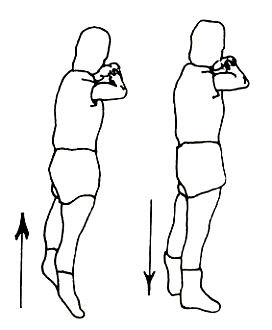Acid reflux, or gastroesophageal reflux disease (GERD), occurs when acid that should remain in the stomach “leaks” into the esophagus—the tube leading from the mouth to the stomach.
The digestive juices created in the stomach and liver tend to be very caustic. Fortunately, the lining of the stomach is normally able to protect itself from these juices by secreting a protective mucus shield. But the esophagus doesn’t have these protective mechanisms. Therefore, any acid that refluxes into the esophagus causes pain, inflammation, and damage.
Signs and Symptoms of Acid Reflux
The most common symptom of acid reflux is heartburn pain—a burning sensation often centered in the breastbone area that can travel upward through the chest and into the neck, throat, or face.
Of course, nearly all of us have had occasional heartburn after eating a meal that didn’t agree with us, or just eating too much of something we couldn’t resist. But persistent heartburn is a telltale sign that you have acid reflux. Other signs and symptoms of acid reflux include regurgitation and excessive salivation.
Natural Ways to Treat Acid Reflux
Drugs that reduce acid production in the stomach are often the conventional treatment of choice for heartburn and acid reflux. There are a few different types of these highly popular acid-reducing drugs:
- Antacid tablets are simply alkaline minerals (calcium or magnesium) that neutralize any acid present.
- Proton pump inhibitors (Nexium, Prilosec, etc.) block the action of an enzyme that causes release of acids from parietal cells in the stomach lining.
- H2 histamine blockers (Zantac, Pepcid, et cetera) block certain histamine receptors in the digestive tract. These receptors signal the parietal cells to release acids—so if the receptors are blocked, obviously the cells don’t get the message.
The problem with all of these acid-reducing drugs is that they provide temporary comfort at a long-term cost. The lining of your stomach secretes acid in response to the presence of food or drink. This acid is necessary for proper digestion. So a reduction in stomach acid interferes with the body’s ability to fully digest food.
As poorly digested food particles make their way into the rest of your digestive tract, they can pass through the intestinal walls. There they are recognized as foreign material, and the body sets up an allergic immune response. In addition, sufficient stomach acid levels are needed to absorb certain vitamins and minerals properly.
Instead, I recommend these simple, cheap, and much more effective ways to treat acid reflux.
Fix Your Hiatal Hernia
Along with acid reflux, do you experience the feeling that you’re full to the top after eating only a few bites? Do you also often burp your food and stomach acid back up after a meal? And do all your symptoms seem to get worse when you sit down or lie on your back? Well, you may have a hiatal hernia.
There is a big dome-shaped muscle called the diaphragm that separates the organs in the top part of your chest from the stomach and the other digestive organs in the bottom half. In the back part of the diaphragm, there’s a button-sized hole that allows the esophagus to go from the throat to the stomach. Sometimes this hole gets enlarged for one reason or another, and if it does, the stomach can worm its way up into the hole—a condition known as a hiatal hernia.
If the stomach is stuck up in the hole of the diaphragm, then the first order of business is to get it out. You can accomplish this by doing this exercise:
- Drink about a glass of either room temperature or slightly warm water when you get out of bed first thing in the morning. (No coffee, no tea, no juice, no cold water—just warm water.)
- While standing, bring your arms straight out from your sides and bend your elbows so your hands are touching your chest.
- Stand up on your toes as high as possible and drop. You should get a pretty good jolt. Drop down like this 10 times in a row.
- Then, while standing with your arms up, pant short quick breaths for about 15 seconds. That's it.
The movement looks like this (also check out the video below for a full demonstration):

The warm water acts like a weight in the stomach. Being warm, it doesn't cause the stomach to cramp. Instead, it relaxes it. Spreading your arms stretches the diaphragm and opens up that hole in the back. Dropping down on your heels jerks the stomach out of the hole and the panting tightens up the diaphragm muscle to close the hole.
If you have a hiatal hernia, you need to do this exercise every day—not just until everything feels normal. It will also strengthen the area and make the hiatal hernia less likely to come back—which may well put an end to your acid reflux problems.
Ginger
Ginger root powder can be more effective for acid reflux than any over-the-counter or prescription medication available. For optimal acid reflux treatment, I suggest using a teaspoon of the freshly grated root each day.
If that's not possible or you find it inconvenient, then try taking 1,000 mg of ginger powder in either capsules or in bulk powder form (approximately ¼ teaspoon).
Reduce Salt Use
Researchers in Norway discovered that individuals who routinely added salt to their meals had almost twice the risk of experiencing acid reflux. Reducing your salt intake is a simple solution. If food seems too bland, then try substituting other herbs, spices, and natural vinegars. I like the all-purpose, all-natural seasoning powder called Spike that is sold in most health food stores.
Chew Gum
Chewing gum has been shown to increase the volume of saliva by almost 140 percent. Saliva contains a long list of compounds that provide protection for the esophagus. These include proteins, mucin, prostaglandin E2, and epidermal growth factor. These protectants help explain the effectiveness of using chewing gum as natural way to treat acid reflux.
Licorice
The natural solution for ulcers, deglycyrrhizinated licorice root (DGL), can also be an effective acid reflux treatment. The suggested dose of DGL is two tablets, chewed about 20 minutes before meals, three times a day, or it can be taken shortly before bedtime if you suffer mostly from nighttime acid reflux. Use only chewable DGL—it must be mixed with saliva in order to be effective.
Probiotics
Probiotics can prevent and treat hundreds of common ailments, including acid reflux. Probiotics are live micro-organisms that, when administered in adequate amounts, provide a health benefit to the host by engaging and neutralizing toxic compounds.
While commercial supplements are the first thought that comes to mind when you mention probiotics, naturally fermented, "live" foods have been around since the beginning of humankind. Fermented vegetables, fermented milk products (clabber, yogurt, cheese, buttermilk), kefir, fermented soy products (natto, miso, tempeh, soy sauce, fermented tofu), and even naturally fermented, unpasteurized beers are some of the most complete probiotics available.
My favorite fermented food (besides unpasteurized beer, of course) is homemade sauerkraut. I keep a fresh batch going almost constantly, and some already made in the fridge at all times. It provides one of the widest varieties of beneficial bacteria that are known to protect against all kinds of digestive troubles, including acid reflux.
During those times when you’re not home or don’t have access to homemade sauerkraut or other fermented foods, I recommend the use of a commercial probiotic product. Look for one that can maintain viability without refrigeration.
D-Limonene Extract
An extract from citrus peel known as d-limonene can provide a protective coating for both the stomach and esophagus. In one unpublished trial, subjects took one gram of d-limonene every other day for 20 days, on an empty stomach (that is, half an hour before eating or an hour afterward). A third of them experienced relief from their heartburn after a single capsule, and within two weeks 90 percent had relief. After a single course of treatment, relief lasted for up to six months.



